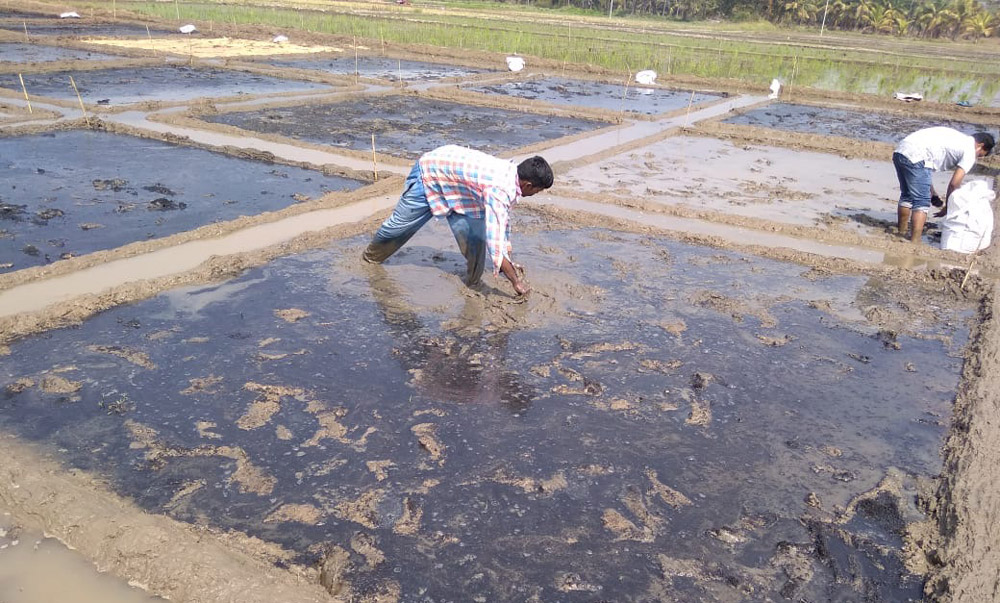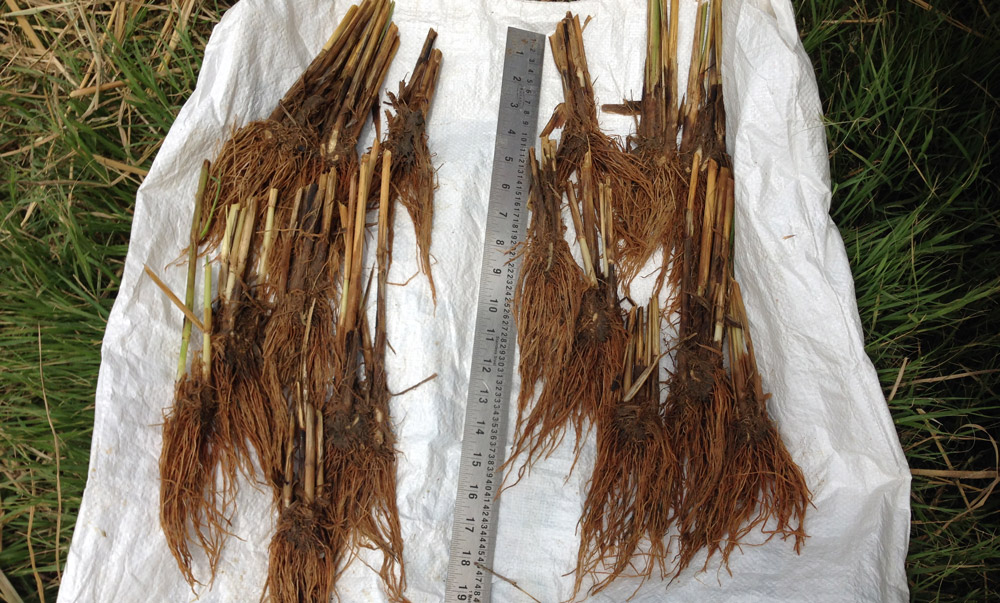#53: Biochar increases rice root architecture
How can crop roots help to combat climate change? A field study on biochar and rice root architecture shows that roots are highly plastic and can greatly contribute to the soil organic matter pool.

Increasing the organic carbon content of agricultural soils can decrease the greenhouse gas emissions of agriculture while increasing soil fertility and yield. The application of biochar and the enhancement of crop root architecture are discussed as promising management techniques to increase soil organic matter in the long-term and thereby remove carbon from the atmosphere. Roots sequester a large amount of carbon in the soil. Optimization of root architecture in a way that enhances carbon sequestration and resource acquisition is of great importance for combatting climate change and for increasing agricultural production. Biochar applications directly contribute to the stable soil organic matter pool and can increase soil fertility, thereby promoting crop growth. This raises the question whether biochar applications also enhance crop root architecture, which would additionally contribute to carbon sequestration.
Measuring rice root architecture
In the frame of a Master's thesis, and as one of the first of its kind, a field experiment was set up in Southern India to study the effect of biochar supplemented with fertilizer (so-called biochar-based fertilizer) on rice root architecture, rice yield, and soil carbon dynamics. For the analysis, a total of 216 rice roots were dug out, photographed, and analyzed for eight root architectural traits such as width, opening angle, depth, biomass, or number of gaps.

Roots develop with biochar addition
The results clearly showed that the architecture of rice roots adapts to different soil amendments: Most measured root traits significantly increased upon treatment addition, leading to a more developed root architecture in the presence of biochar. And even more important: Rice yield increased up to 37% with treatments compared to unamended soil. Root opening angle and root width correlated strongly with grain yield, making them the most important root traits for yield improvements. These findings confirm that including biochar in rice cultivation represents a sustainable management technique that contributes to carbon sequestration through its application and through enhanced root growth, while preserving food security.

Biochar-based fertilizers are more efficient
The supplementation of biochar with mineral fertilizer has proven to be the most effective combination to both increase rice root architecture and yield and to promote carbon storage. Interestingly, the combination of biochar with half of the recommended dose of mineral fertilizer (BC + MF + SJ) produced the same yield as the full dose of mineral fertilizer, emphasizing the increased nutrient-use efficiency of biochar-based fertilizers. The inclusion of this biochar-based fertilizer into rice production could lower fertilization costs and negative environmental effects of over-fertilization.
Ursina Morgenthaler